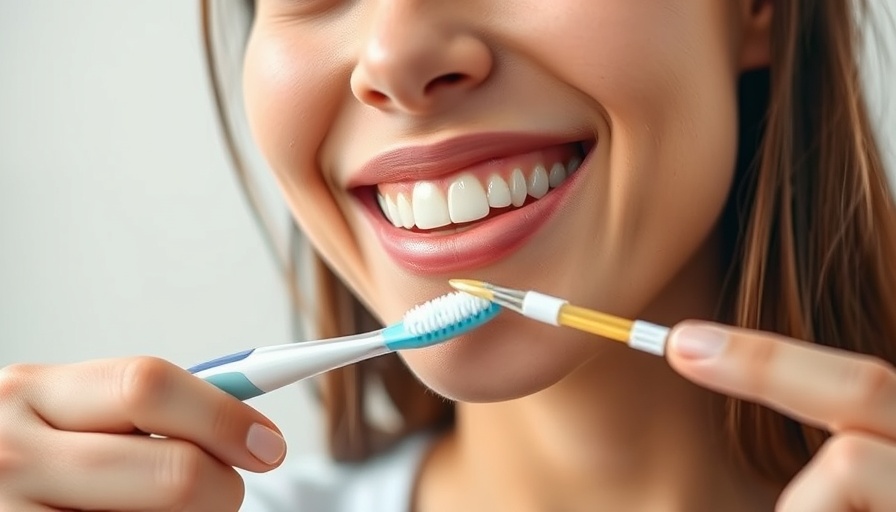
Unpacking the Toothpaste Dilemma: What’s Right for You?
In a world flooded with choices, determining what toothpaste you should use can feel overwhelming. You walk into a store and are met with an expansive aisles showcasing colorful packaging, enticing slogans, and a myriad of promises. For many adults—particularly women aged 40–70—partnering aesthetic appeal with oral health is crucial, especially as a bright smile often serves as a reflection of overall vitality.
Why Fluoride Matters: The Science Behind Strong Teeth
If there’s one ingredient you'll notice on nearly every toothpaste box, it’s fluoride. This compound is renowned for its ability to fortify tooth enamel, which is critical in fighting cavities and protecting against decay. While traditional fluoridated toothpaste remains a go-to choice, research continues to support its efficacy, echoing dentist recommendations across the UK. But it's essential to balance this with consumer education on the appropriate usage, especially for families with children.
Understanding High Fluoride Toothpaste: Who Needs It?
High fluoride toothpaste is a prescription-only option available for specific cases, serving patients who need additional enamel support. However, caution is warranted—specifically among families, as children might inadvertently ingest toothpaste, given its minty flavor. Opting for prescription-strength fluoride should be discussed thoroughly with a dental professional, ensuring that the benefits outweigh potential risks.
Going Natural: The Trend Towards Fluoride-Free Toothpaste
In recent years, a growing segment of consumers has gravitated towards fluoride-free toothpaste, often in the pursuit of 'natural' living. The allure of ingredients like charcoal or baking soda promises a healthier mouth without synthetic additives. However, it's important to approach these products with skepticism—while the intention is pure, ditching fluoride could increase the risk of cavities. Understanding the trade-offs of natural versus traditional toothpaste remains pivotal for maintaining oral hygiene without compromising health.
The Whitening Toothpaste Trap: An Inside Look
Teeth whitening toothpaste has ascended to popularity, with many believing it will deliver a stunning smile. Unfortunately, the reality can be a letdown. Most whitening toothpastes contain minimal amounts of the actual bleaching agents used by dentists, often leading to disappointing results. Plus, abrasive materials found in some formulas can erode your enamel, making the pursuit of whiter teeth counterproductive. Rather than relying solely on over-the-counter options, consulting your dentist for professional treatments is highly advisable.
Soothing Sensitivity: Tailored Toothpaste Solutions
For those who experience tooth sensitivity or gum problems, special formulations designed to alleviate discomfort are widely available. These pastes usually incorporate active ingredients that work to protect sensitive areas of the mouth while still containing fluoride. By aligning your toothpaste choice with your specific needs, you can enhance your overall oral care while feeling confident about your dental hygiene decisions.
Your Next Steps Towards a Healthier Smile
Choosing the right toothpaste goes beyond personal preference—it's about understanding the science, purpose, and implications of each option available. As we navigate our beauty and health journeys, our toothpaste choice becomes part of our day-to-day routine that contributes to our self-image and overall well-being. If you're uncertain about which product suits your needs, speak with your dentist to tailor an oral hygiene routine that's as unique as your smile.
With numerous options out there, it is clear that toothpaste does indeed matter—but knowing which one to choose can make all the difference.
 Add Row
Add Row  Add
Add 




Write A Comment